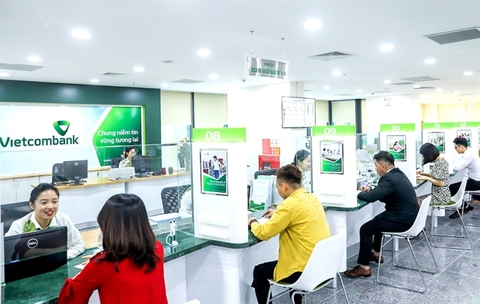Implications of Central Bank Digital Currency in Vietnam
Implications of Central Bank Digital Currency in Vietnam
A survey by the Bank for International Settlements (BIS) published in May states that there are currently 81 countries participating in Central Bank Digital Currency research and development (CBDC), compared to only eight countries before 2017.
Illustrative photo. |
More than half of the Central Banks named in the survey are in the development or pilot stage, and about two-thirds of these Central Banks say they would issue a retail CBDC in the short or medium term. Many Central Banks are now developing CBDC ecosystems with the coordination of the private sector and existing payment methods.
Central Banks want CBDC
Basically, there are two CBDC models, including one tier where the Central Bank not only operates the interbank CBDC system but also provides direct CBDC wallet and account services to the public. At two tier, the Central Bank and private sector intermediaries work together, with 70% of the Central Bank developing the two-tier model because this model ensures the effectiveness of providing services such as customer access, identification process, anti-money laundering, anti-terrorist financing (AML/CFT), and handling retail payments to the private sector.
The motivation for CBDC development is also different between the two groups of countries. Developed countries are interested in CBDC for the purpose of increasing the efficiency and safety of domestic payments and financial stability. Besides, with the emergence of stable coins and other cryptocurrencies it is also a reason for the development of CBDCs in these countries. For developing countries, the retail CBDC is driven by domestic payment efficiency, payment security, financial stability, and cross border payments. Serving inclusive monetary and fiscal policy is also an important reason for the development of CBDCs in developing countries.
According to PWC rankings (figure 1), Nigeria is leading the way with the issuance of eNaira, the first retail CBDC in Africa. With the issuance of the Sand Dollar, the Bahamas was the first country to issue a CBDC. China was the first major economy to pilot a CBDC with a digital yuan in 2020, and as of March 2022 the pilot program is running in 12 cities including Beijing and Shanghai.
For wholesale CBDC, the leading project in development is mBrige, - a combination of Hong Kong and Thailand. This project enables cross border payments based on DLT technology. Singapore also ranks high with two new CBDC projects for cross border payments and cross currency payments.
Implications for Vietnam
According to the Law, the State Bank of Vietnam performs the function of state management of currency, banking activities, and dealings with foreign exchange. It also performs the functions of the Central Bank in terms of issuing money to Credit Institutions (CIs) and providing monetary services to the Government. The law also regulates the activities of the State Bank of Vietnam to stabilize the value of money; ensure the safety of banking operations; the system of credit institutions; the safety and efficiency of the national payment system; and contributes to socio-economic development of the country.
Within the functions of the State Bank of Vietnam, issues related to payments and payment systems will be the focus of discussion regarding the goals of digital currency development. Issues of monetary policy management and financial stability also play an important role.
In addition to the interbank payment system, which has been in operation since 2002, Automated Clearing House (ACH) with many new features and utilities also came into operation in 2019, and continuously upgraded to serve the development of a non-cash payment policy. Hence with the current relatively modern payment system, whether it is necessary to have a digital currency is a problem. In addition, several issues need to be considered regarding the payment system for the issued digital currency.
Firstly, it is to be seen if it possible to integrate this digital currency into the existing payment system or a new payment system needs to be established. Secondly, when setting up a new payment system, it must be seen if this digital currency allows payments to be made through different payment means and connect with each other. In other words, if the payer and receiver use different means of payment, it needs to be seen if this system increases competition in the payment system or leads to the redundancy of the payment system.
Regarding the management of monetary policies in general, the current tools have allowed the State Bank of Vietnam to optimally manage its monetary policy. Cryptocurrencies can serve as additional monetary policy instruments requiring in-depth discussion and research, with a focus on whether to issue a digital currency and its potential impact on monetary policy transmission.
Although digital currency can contribute to increased competition in the financial system, it can also create negative effects on the stability of the system, especially the banking system, such as reducing credit source for banking. Therefore, this is also an important issue to consider in terms of the risks and disadvantages of cryptocurrencies.






















